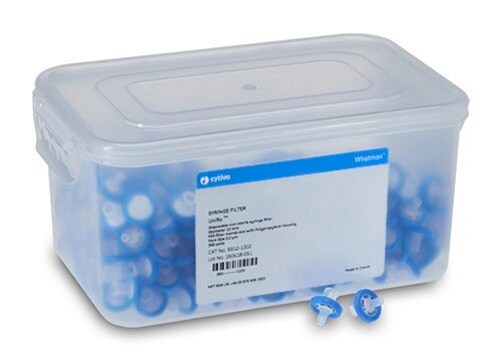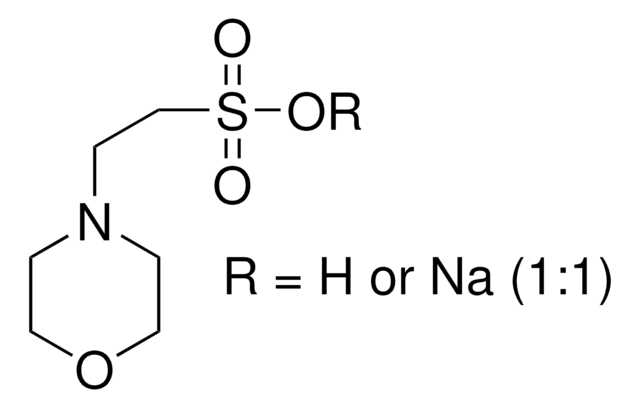RES0114M-A7
MES Natriumsalz
Synonym(e):
2-Morpholino-ethansulfonsäure Natriumsalz
About This Item
Empfohlene Produkte
Biologische Quelle
synthetic
Form
powder
Methode(n)
cell culture | mammalian: suitable
Verunreinigungen
Endotoxin and microbial, tested
Nützlicher pH-Bereich
5.5-6.7
pKa
6.1
Eignung
suitable for manufacturing use
Fremdaktivität
Cytotoxicity, DNase, NICKase, RNase, and Protease; tested
SMILES String
[Na+].[O-]S(=O)(=O)CCN1CCOCC1
InChI
1S/C6H13NO4S.Na/c8-12(9,10)6-3-7-1-4-11-5-2-7;/h1-6H2,(H,8,9,10);/q;+1/p-1
InChIKey
IRHWMYKYLWNHTL-UHFFFAOYSA-M
Suchen Sie nach ähnlichen Produkten? Aufrufen Leitfaden zum Produktvergleich
Allgemeine Beschreibung
M-Clarity Program
Buffer quality is vital for the success of biopharmaceutical processes, because buffers are indispensable in nearly every production step.
Our broad portfolio of buffer materials manufactured under appropriate controls is tailored to your needs. Ranging from non-GMP grades for low-risk application, to IPEC-PQG GMP for higher-risk applications, we have products covering all your manufacturing needs.
Anwendung
MES Sodium is used in cell culture media, biopharmaceutical buffer formulations both upstream and downstream and diagnostic reagents. MES based buffers are used in purification bioprocesses of antibodies, peptides, proteins and blood components.
Verpackung
RES0114M-A701X: 100g container
RES0114M-A702X 1kg container
RES0114M-A704X: 10kg container
RES0114M-A705X: 25kg container
Rechtliche Hinweise
Ersetzt durch
Lagerklassenschlüssel
11 - Combustible Solids
WGK
WGK 1
Flammpunkt (°F)
Not applicable
Flammpunkt (°C)
Not applicable
Analysenzertifikate (COA)
Suchen Sie nach Analysenzertifikate (COA), indem Sie die Lot-/Chargennummer des Produkts eingeben. Lot- und Chargennummern sind auf dem Produktetikett hinter den Wörtern ‘Lot’ oder ‘Batch’ (Lot oder Charge) zu finden.
Besitzen Sie dieses Produkt bereits?
In der Dokumentenbibliothek finden Sie die Dokumentation zu den Produkten, die Sie kürzlich erworben haben.
Kunden haben sich ebenfalls angesehen
Unser Team von Wissenschaftlern verfügt über Erfahrung in allen Forschungsbereichen einschließlich Life Science, Materialwissenschaften, chemischer Synthese, Chromatographie, Analytik und vielen mehr..
Setzen Sie sich mit dem technischen Dienst in Verbindung.









